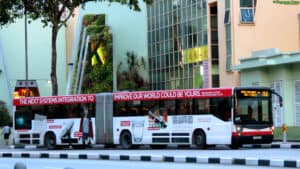INTELLIGENT TRAFFIC SYSTEMS – TECHNOLOGY IMPROVE TRANSPORT SYSTEM
Technology has revolutionized the way public transportation systems operate, improving efficiency, convenience, and sustainability.
Transportation Systems Mainly divided into two parts.
LIST OF PRIVATE TRANSPORT SYSTEMS
Private transportation systems
Private transportation systems are modes of transportation that are owned and operated by private individuals or companies, rather than by government agencies. Here is a list of some common private transportation systems:
- Cars: Most people in developed countries rely on cars as their primary mode of private transportation.
- Motorcycles: Motorcycles are another popular form of private transportation, especially in urban areas where they can be more efficient than cars due to their smaller size and ability to navigate through traffic.
- Taxis: Taxis are a common form of private transportation in many cities, offering passengers the convenience of on-demand rides for a fee.
- Ride-sharing services: Companies like Uber and Lyft have revolutionized the transportation industry with their app-based ride-sharing services, which allow passengers to request rides from private drivers using their smartphones.
- Private buses: Some companies, schools, and other organizations operate their own private bus fleets to transport employees or clients.
- Private boats: Many people own their own boats for recreational purposes, such as fishing or pleasure cruising.
- Private planes: Some individuals and companies own their own planes for personal or business travel.
- Helicopters: Like private planes, helicopters can be owned and operated by individuals or companies for a variety of purposes, including transportation, sightseeing, and emergency services.
LIST OF PUBLIC TRANSPORT SYSTEMS
Public transportation systems are modes of transportation that are owned and operated by government agencies or publicly-owned companies, and are available for use by the general public. Here is a list of some common public transportation systems:
- Buses: Buses are a common form of public transportation in many cities and towns, transporting passengers along fixed routes for a fare.
- Trains: Trains, including subways, light rail, and regional rail systems, are a popular form of public transportation in many urban areas.
- Ferries: Ferries are used to transport people and vehicles across bodies of water, and are often operated by public agencies.
- Cable cars: Some cities, such as San Francisco, have public cable car systems that transport passengers up and down steep hills.
- Trams: Trams, also known as streetcars or trolleys, are a type of light rail vehicle that operates on tracks along city streets.
- Bike-sharing: Many cities now offer public bike-sharing programs, which allow people to rent bikes from stations around the city and return them to any other station.
- Rideshare: Some cities offer public rideshare programs, which allow people to hail rides from publicly-owned vehicles using their smartphones.
- Vanpools: Vanpools are a form of rideshare that typically involve a group of people commuting to work or school together in a privately-owned van.
INTELLIGENT TRAFFIC SYSTEMS – TECHNOLOGY IMPROVE TRANSPORT SYSTEM
One major advancement is the use of GPS tracking, which allows for real-time monitoring of buses, trains, and other vehicles. This enables more efficient routing and scheduling, reducing wait times for passengers and improving overall reliability.
Mobile ticketing is another technology that has made a big impact on public transportation. Passengers can now purchase tickets using their smartphones, eliminating the need to wait in line at a kiosk or onboard the vehicle. This has not only improved the passenger experience, but it has also helped streamline the ticketing process for transportation agencies.
Intelligent transportation systems (ITS) are also being widely adopted by public transportation agencies. These systems use a variety of technologies, such as sensors, cameras, and communication systems, to gather and analyze data on traffic patterns and vehicle performance. This information can be used to optimize routes, schedule vehicles more efficiently, and improve overall efficiency.
In addition to these technological advancements, many public transportation systems are also transitioning to electric and hybrid vehicles. These vehicles have significantly lower fuel consumption and greenhouse gas emissions compared to traditional fossil fuel-powered vehicles, making them a more sustainable option for public transportation.
Overall, the incorporation of technology into public transportation has greatly improved the efficiency, convenience, and sustainability of these systems. As technology continues to evolve, we can expect to see even more innovations in the transportation industry that will benefit both passengers and transportation agencies.
Here is one example that How has technology improved the efficiency of public transport?
Technology has improved the efficiency of transport vehicles in several ways:
- GPS tracking: Transportation vehicles equipped with GPS tracking systems can be monitored in real time, allowing for more efficient routing and scheduling. This can help reduce wait times for passengers and improve overall reliability.
- Mobile ticketing: Many Transportation Agencies now offer the option for passengers to purchase tickets using their smartphones, which can help reduce the time spent waiting in line to purchase tickets at a kiosk or onboard the bus.
- Automatic vehicle location (AVL) systems: These systems use GPS technology to track the location and movement of vehicles in real time, allowing for more efficient dispatch and routing.
- Intelligent transportation systems (ITS): These systems use a variety of technologies, including sensors, cameras, and communication systems, to gather and analyze data on traffic patterns and vehicle performance. This information can be used to optimize routes, schedule buses more efficiently, and improve overall efficiency.
- Electric and hybrid vehicles: Many vehicles are now using electric or hybrid type, which can significantly reduce fuel consumption and greenhouse gas emissions compared to traditional fuel engines.
- Automatic vehicle control (AVC) systems: These systems use sensors, cameras, and other technologies to automatically control the acceleration, braking, and steering of vehicles, potentially improving safety and efficiency.
SAFETY OF PUBLIC TRANSPORT SYSTEM WITH TECHNOLOGY & NEW INNOVATIONS
Technology has the potential to significantly improve the safety of public transportation systems. Some examples of how technology is being used to enhance safety include:
Automatic vehicle control (AVC) systems: These systems use sensors, cameras, and other technologies to automatically control the acceleration, braking, and steering of buses, trains, and other vehicles, potentially improving safety and reducing the risk of accidents.
Intelligent transportation systems (ITS): These systems use a variety of technologies, such as sensors, cameras, and communication systems, to gather and analyze data on traffic patterns, vehicle performance, and passenger behavior. This information can be used to identify safety hazards and implement measures to mitigate them.
Predictive maintenance: Many public transportation systems use predictive maintenance technologies, such as sensors and machine learning algorithms, to identify and diagnose potential mechanical issues before they become serious problems. This can help prevent vehicle failures and reduce the risk of accidents.
Security surveillance: Many public transportation systems now use surveillance cameras and other security technologies to monitor passenger activity and identify potential threats.
Overall, the incorporation of technology into public transportation systems has the potential to greatly enhance safety by helping to prevent accidents, identify and mitigate hazards, and ensure the smooth and reliable operation of these systems.

